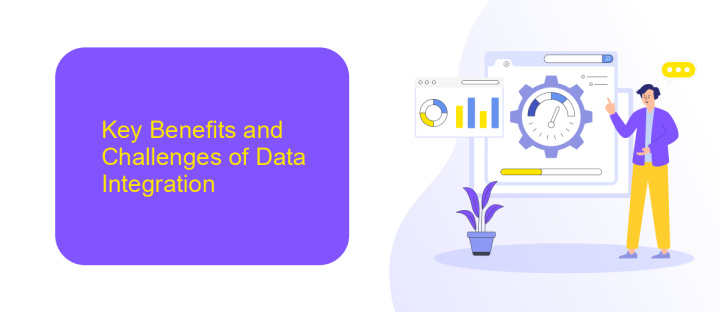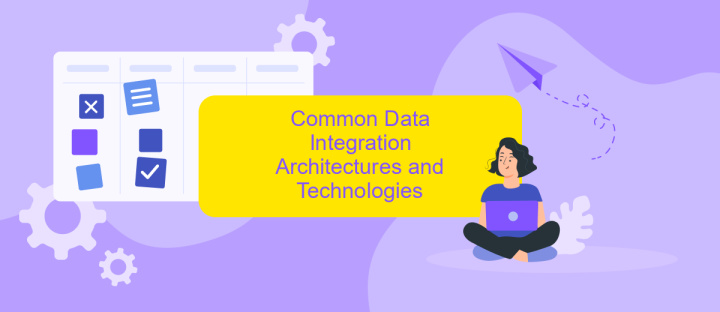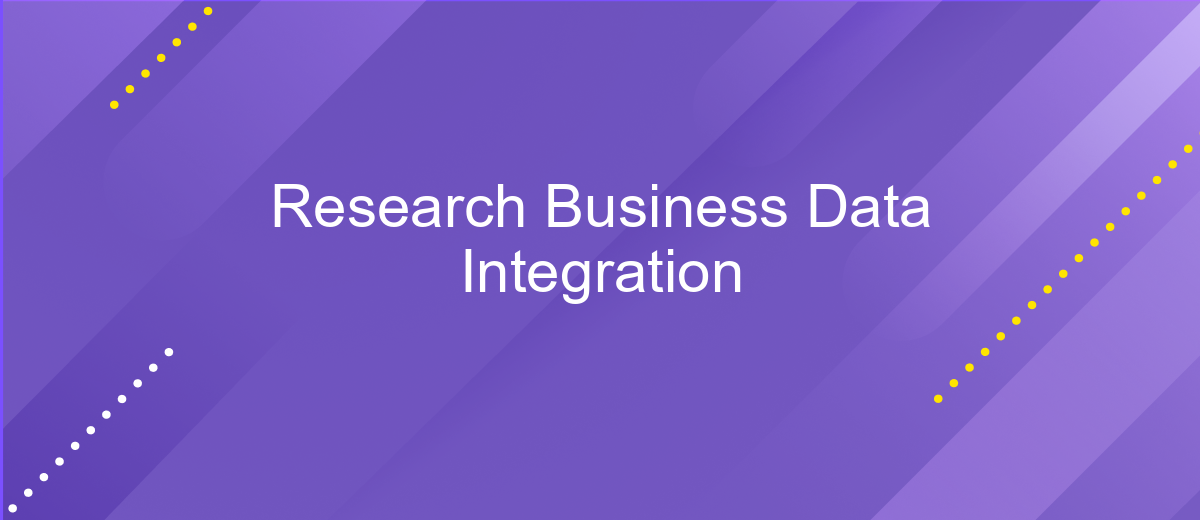Research Business Data Integration
In today's rapidly evolving business landscape, the integration of research data has become a critical component for driving strategic decision-making and fostering innovation. By seamlessly combining data from diverse sources, organizations can gain comprehensive insights that enhance operational efficiency and competitive advantage. This article explores the methodologies, challenges, and benefits of research business data integration, highlighting its pivotal role in transforming raw data into actionable intelligence.
Introduction to Business Data Integration
Business data integration is a critical process in modern enterprises, enabling seamless connectivity between disparate data sources and systems. By integrating data, businesses can enhance decision-making, improve operational efficiency, and gain a competitive edge. The integration process involves consolidating data from various sources, such as databases, cloud services, and on-premises applications, into a unified view. This allows organizations to access real-time insights and make informed decisions.
- Improved data accuracy and consistency
- Enhanced collaboration across departments
- Streamlined business processes
- Facilitated compliance with regulatory requirements
- Increased agility in responding to market changes
Implementing a robust business data integration strategy requires careful planning and execution. Organizations must choose the right tools and technologies that align with their specific needs and infrastructure. Additionally, addressing challenges such as data quality, security, and scalability is crucial for successful integration. By prioritizing data integration, businesses can unlock the full potential of their data assets, driving innovation and growth in an increasingly data-driven world.
Key Benefits and Challenges of Data Integration

Data integration offers significant benefits, such as improved decision-making and increased operational efficiency. By consolidating disparate data sources, businesses can gain a comprehensive view of their operations, leading to more informed strategic decisions. It also enhances data accuracy and consistency, reducing errors and redundancies. Furthermore, integration facilitates real-time data access, enabling businesses to respond swiftly to market changes. Tools like ApiX-Drive simplify the integration process, allowing companies to automate data workflows without extensive technical expertise.
However, data integration presents challenges, including data security and privacy concerns. Integrating multiple data sources can expose sensitive information to unauthorized access if not properly managed. Additionally, the complexity of integrating diverse systems can lead to high implementation costs and require specialized skills. Ensuring data quality and consistency across integrated systems is another hurdle, as discrepancies can lead to inaccurate insights. Despite these challenges, leveraging platforms like ApiX-Drive can mitigate some difficulties by providing user-friendly interfaces and robust security measures, facilitating smoother and more secure data integration processes.
Common Data Integration Architectures and Technologies

Data integration is a critical component in modern business environments, enabling seamless connectivity and data flow across disparate systems. The architecture of data integration solutions can vary significantly, depending on the specific needs and complexity of the organization. Typically, these architectures are designed to ensure data consistency, accuracy, and accessibility, thereby supporting business intelligence and decision-making processes effectively.
- ETL (Extract, Transform, Load): This traditional approach involves extracting data from various sources, transforming it to fit operational needs, and loading it into a destination database or data warehouse.
- ELT (Extract, Load, Transform): In this architecture, data is first extracted and loaded into the target system, where transformation processes occur. This is often used in cloud-based data integration.
- Data Virtualization: This technology allows users to access and manipulate data without requiring technical details about the data, such as its format or physical location.
Technologies supporting these architectures include data integration platforms like Apache Nifi, Talend, and Informatica, which offer robust tools for managing data workflows. Additionally, cloud-based services like AWS Glue and Azure Data Factory provide scalable solutions for integrating and processing large volumes of data. By leveraging these architectures and technologies, businesses can achieve a unified view of their data, driving improved analytics and operational efficiency.
Data Integration Best Practices and Strategies

Effective data integration is crucial for businesses aiming to leverage data-driven insights and maintain a competitive edge. To achieve this, organizations must adopt best practices that ensure seamless data flow and integration across various systems and platforms. One key strategy is to establish a comprehensive data governance framework that outlines roles, responsibilities, and standards for data management.
Another important aspect is the use of modern data integration tools that support real-time data processing and transformation. These tools should be scalable and flexible to accommodate the evolving needs of the business. Additionally, ensuring data quality and consistency is paramount to avoid errors and discrepancies that could impact decision-making processes.
- Implement robust data governance policies.
- Utilize advanced data integration technologies.
- Ensure data quality and consistency.
- Facilitate seamless communication between systems.
By following these best practices, businesses can enhance their data integration efforts, leading to more accurate insights and better decision-making. It's essential to continuously evaluate and update integration strategies to keep pace with technological advancements and changing business requirements.


Future Trends in Business Data Integration
The future of business data integration is poised to be shaped by advancements in artificial intelligence and machine learning. These technologies will enable more sophisticated data analysis and automation, allowing businesses to make real-time decisions with greater precision. As companies increasingly rely on cloud-based solutions, seamless integration across platforms will become paramount. Tools like ApiX-Drive will play a crucial role, offering user-friendly interfaces that simplify the integration process, thus reducing the need for extensive IT involvement.
Moreover, the growing emphasis on data privacy and security will drive the development of more robust integration protocols. Businesses will need to ensure that their data integration practices comply with evolving regulations, such as GDPR and CCPA. Additionally, the rise of the Internet of Things (IoT) will lead to an exponential increase in data sources, necessitating more scalable and flexible integration solutions. As these trends unfold, businesses that adapt quickly to these changes will gain a competitive edge, leveraging integrated data to enhance their operations and customer experiences.
FAQ
What is Business Data Integration?
Why is Data Integration important for research businesses?
What are the common challenges faced during Data Integration?
How can automation help in Business Data Integration?
What factors should be considered when choosing a Data Integration tool?
Strive to take your business to the next level, achieve your goals faster and more efficiently? Apix-Drive is your reliable assistant for these tasks. An online service and application connector will help you automate key business processes and get rid of the routine. You and your employees will free up time for important core tasks. Try Apix-Drive features for free to see the effectiveness of the online connector for yourself.

